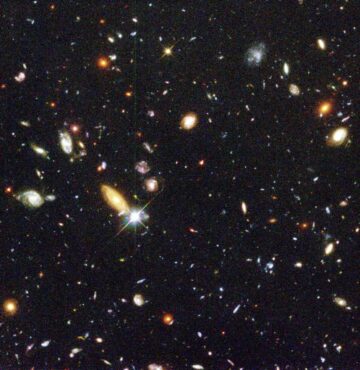Pioneers of Open Science
Open science has gained a strong foothold in many fields, but astronomy has been a forerunner in this area for decades. From the perspective of libraries, astronomy publications and data have stood out as exemplary representatives of open science, with the aim of freely sharing scientific results with the entire world.
Astronomy publications among the first to go Open
The development of open publications made a significant leap in the early 1990s with the creation of the arXiv.org database, which supported the sharing of knowledge among physicists and other researchers. Astronomers quickly became active users of this preprint archive. Today, several platforms offer space for publishing non-peer-reviewed preprints, but arXiv.org remains a key channel for information sharing. This year alone, over 5,500 new preprints from the field of astrophysics were found on arXiv, highlighting its central role in the open dissemination of astronomical research.
NASA’s Astrophysics Data System (ADS) is another excellent example of the culture of openness in astronomy. The reference database contains nearly 15 million articles in astronomy and astrophysics, many of which are available either as full texts or references. The NASA/ADS allows broad access to research findings, while in many other fields, equivalent high-quality reference databases are often behind paywalls, limiting access to scientific publications for non-paying customers.
A third significant advancement in open publishing in astronomy is the transition of the journal Astronomy & Astrophysics to the Subscribe to Open (S2O) model. This model maintains the traditional subscription fee but opens the articles to the global scientific community with the support of subscriptions. This model aims to promote global equality in access to information while eliminating separate publishing fees for authors.
Astronomical Data Available to All
In astronomy, openness is not limited to publications but also extends to the wide availability of data. The openness of many astronomical observations and data has been crucial in enabling breakthroughs in the field. For example, the European Southern Observatory (ESO), the European Space Agency (ESA), and NASA have made vast amounts of their observational data publicly available.
Similarly, the data produced by large telescopes, such as the Hubble Space Telescope and ESO’s Very Large Telescope (VLT), are openly accessible and are utilized by thousands of researchers worldwide. Such open data supports the democratization of science, allowing new researchers to access valuable data without significant financial investments.
Many astronomical observations and data are also available to amateur astronomers. For instance, on the Zooniverse platform, citizens can participate in analyzing astronomical data and thus contribute to scientific research. This approach emphasizes the importance of openness not only in the dissemination of scientific knowledge but also in strengthening the interaction between science and society.
Astronomers at Turku University
Astronomers at the University of Turku are actively involved in the principles of open publishing and data transparency within the field. In 2023, 468 research outputs were registered in the University of Turku’s Research Information System, with the affiliation either from the Space Research Laboratory, Tuorla Observatory, or the Finnish ESO Centre. Of these studies, a good 405 were openly accessible in their original publications.
In general, astronomy serves as an excellent example for other scientific fields of how openness can support the development of science and make research accessible to all interested parties, regardless of their geographical location or financial resources.

